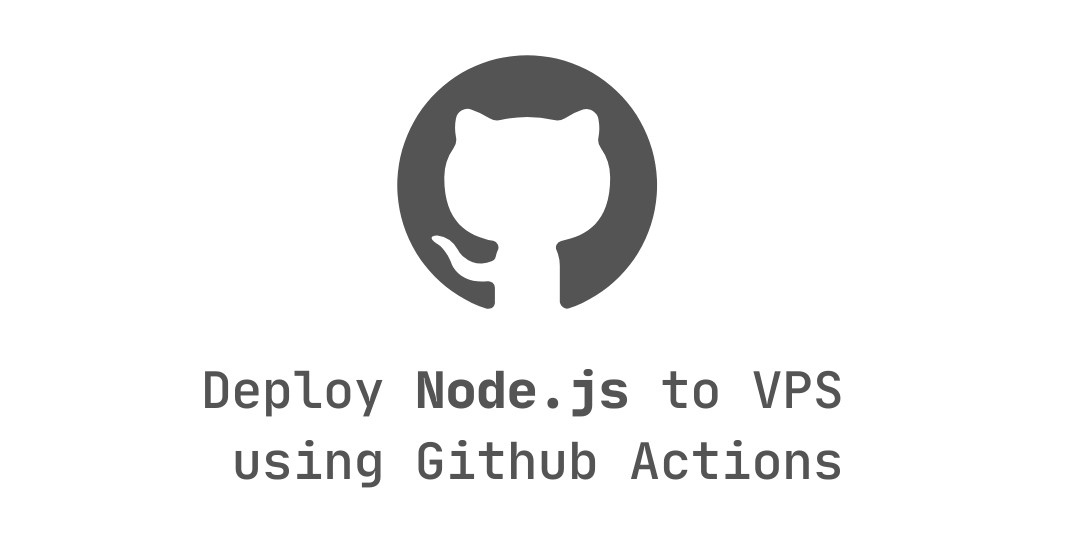Steps to deploy Node.js to VPS using PM2 and Github Actions
-
- Pay off technical debt as soon as possible. It would be imprudent to do otherwise.
-
- Spending an hour watching users is more informative than spending a day guessing what they want.
If you hate git submodule, then you may want to give git subtree a try.
When you want to use a subtree, you add the subtree to an existing repository where the subtree is a reference to another repository url and branch/tag. This add command adds all the code and files into the main repository locally; it's not just a reference to a remote repo.
When you stage and commit files for the main repo, it will add all of the remote files in the same operation. The subtree checkout will pull all the files in one pass, so there is no need to try and connect to another repo to get the portion of subtree files, because they were already included in the main repo.
Let's say you already have a git repository with at least one commit. You can add another repository into this respository like this:
| # curl 'http://dl4.libgen.io/get.php?md5=71F626732A4D9B52557E465B96D65C72&key=JQV56FFGXC4Z5OX4' -H 'Connection: keep-alive' -H 'Upgrade-Insecure-Requests: 1' -H 'User-Agent: Mozilla/5.0 (X11; Linux x86_64) AppleWebKit/537.36 (KHTML, like Gecko) Chrome/68.0.3440.84 Safari/537.36' -H 'Accept: text/html,application/xhtml+xml,application/xml;q=0.9,image/webp,image/apng,*/*;q=0.8' -H 'Referer: http://download1.libgen.io/ads.php?md5=71F626732A4D9B52557E465B96D65C72&key=XDC51MTR9G5FZ7OT' -H 'Accept-Encoding: gzip, deflate' -H 'Accept-Language: en-US,en;q=0.9' --compressed | |
| libgen () { | |
| echo "[DEBUG] ARGS=${@}" | |
| local URL='http://libgen.io/ads.php?md5=' | |
| local GURL='http://dl4.libgen.io/get.php?md5=' | |
| local MD5=${1} | |
| local JAR="${MD5}.jar" | |
| local KEY=$(curl -sL "${URL}${MD5}" | grep -oE "key=[^']*" | cut -d'=' -f2) | |
| echo "[INFO] MD5=${MD5}" |
| // Simple groupcache example: https://github.com/golang/groupcache | |
| // Running 3 instances: | |
| // go run groupcache.go -addr=:8080 -pool=http://127.0.0.1:8080,http://127.0.0.1:8081,http://127.0.0.1:8082 | |
| // go run groupcache.go -addr=:8081 -pool=http://127.0.0.1:8081,http://127.0.0.1:8080,http://127.0.0.1:8082 | |
| // go run groupcache.go -addr=:8082 -pool=http://127.0.0.1:8082,http://127.0.0.1:8080,http://127.0.0.1:8081 | |
| // Testing: | |
| // curl localhost:8080/color?name=red | |
| package main | |
| import ( |
| 23.21.150.121:3478 | |
| iphone-stun.strato-iphone.de:3478 | |
| numb.viagenie.ca:3478 | |
| s1.taraba.net:3478 | |
| s2.taraba.net:3478 | |
| stun.12connect.com:3478 | |
| stun.12voip.com:3478 | |
| stun.1und1.de:3478 | |
| stun.2talk.co.nz:3478 | |
| stun.2talk.com:3478 |
No, seriously, don't. You're probably reading this because you've asked what VPN service to use, and this is the answer.
Note: The content in this post does not apply to using VPN for their intended purpose; that is, as a virtual private (internal) network. It only applies to using it as a glorified proxy, which is what every third-party "VPN provider" does.
- A Russian translation of this article can be found here, contributed by Timur Demin.
- A Turkish translation can be found here, contributed by agyild.
- There's also this article about VPN services, which is honestly better written (and has more cat pictures!) than my article.
